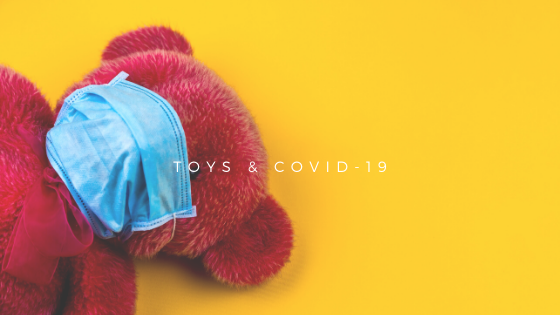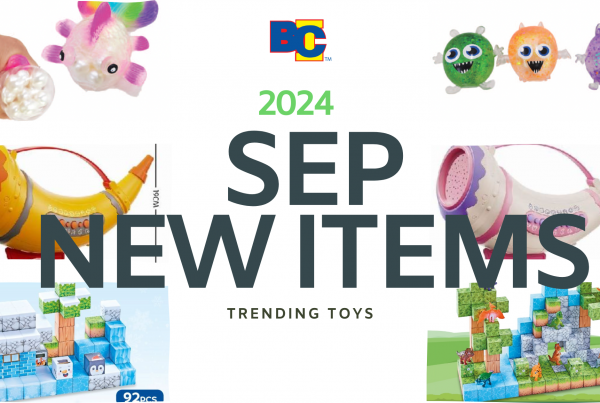Introduction by BCI Limited
The toy industry is vast and still brimming with opportunity especially with the COVID-19 outbreak. Most would think that this outbreak that toys would be taking a back seat, in-fact because children are staying at home with their parents, learning from home; educational toys are needed more than ever. Keeping children busy during the day especially during lockdown is a hard job, educational toys can help alleviate this burden by providing a double edge sword for your children. Learning and fun combined can keep children busy and help with the boredom of lockdown and social distancing; by providing interaction cognitively and physically.
The opportunity for you to enter into the Toy Industry is now, coming up with new ideas during these changing times. Interaction is key for helping the next generation, not only with digital platforms but real-life interaction.
Article by USC Marshall School Of Business
So when the coronavirus pandemic shut down economies around the world, Marianne Szymanski knew she was in for an interesting semester. A three-decade toy industry expert and creator of the influential “Toy Tips” brand, Szymanski has lectured at Marshall since 2015, teaching a 4-unit Entrepreneurship of Small Business class and a 2-unit class that teaches Entrepreneurship through the lens of one industry: the toy industry. She has co-authored three Harvard case studies on the topic.
“It’s not business as usual,” said Szymanski, who is teaching BAEP 460: Entrepreneurship of the Toy Industry, to students via Zoom in eight time zones. “With the COVID-19 disruption, toy industry executives visit our class about how they’re handling this disruption, making pivots and temporarily changing business models.”
In BAEP 460, every student follows a public toy company—Mattel, Build-A-Bear, Jakks Pacific, Funko, Spin Master and Hasbro, or an entertainment company closely related to the toy industry through various licenses (Disney, Nickelodeon (ViacomCBS) to watch and learn about growth potential.
She points out, however, that the majority of toy companies are not large. “More than 90 percent of toy companies are small and mid-size businesses,” she said. “We learn about the inner-workings of small business through these smaller sized toy companies.”
Through case studies and guest speakers, the class studies every aspect of the global toy industry, including manufacturing, legal, trademark and copyright issues and consumer behavior and trends.
“My students are learning the ins and outs of how the industry is changing through success, failure and disruption.”— Marianne Szymanski
But it’s the guest speakers she invites that give her students a front-row look at what’s going on in the toy world.
T. S. Wong is the chairman of Jetta Company Ltd, the leading Original Equipment Manufacturer (OEM) in the toy industry. “I can’t tell you how exciting it was to have him Zoom in live from China to talk about toy manufacturing during this pandemic,” she said.
Tom Neville from Madame Alexander told the story of Beatrice Bernstein Alexander, who in 1923 created what became a toy empire in the doll space.
This is the second term Szymanski is teaching this class. “Last year, our class met the creator of Pictionary, learned about the story of the invention of the Hula Hoop, how Slinky came to be and heard all about how JoJo Siwa and how her bows attracted Nickelodeon. My students are learning the ins and outs of how the industry is changing through success, failure, and disruption.”
Toy Story Two
The pandemic and economic shutdown have caused unprecedented disruption in the toy industry.
There is one big change she sees coming in a post-COVID-19 world. “I’m excited children are back to an interest in the classic play,” she said. Think board games, jigsaw puzzles, collectibles, and make-believe. “It’s not back-to-basics. It’s back to family play, sibling play, sidewalk chalk, and crafting.”
“Before the shutdown people would retreat into their individual devices to play games, download apps, and watch videos,” said Szymanski. “This is still happening, but now we are seeing the resurgence of basic play patterns that people have forgotten about.”
With everyone at home, people have returned to a time where toys require socialization and interaction, she said.
Manufacturing was on hold in China until recently being allowed back on track. “Christmas is happening,” she said, “So is Hannukah, Kwanzaa, birthdays and other holidays and celebrations in the 4th quarter.”
But the question is, will consumers want the kinds of toys that were made before the pandemic? Or will the pick toys that made their families comfortable during this time?
Another upside to industry-wide disruption? Now is a good time to get your toy idea noticed.
“Many toys span multi-generations and now is the time to develop that toy idea you always thought of but never created. Now, is the time to elevate your entrepreneurial spirit,” she said.
This Article Originally appeared in: https://www.marshall.usc.edu/news/not-childs-play | Written by USC Marshall School of Business.
Conclusion
Get started on your innovations for the toy industry. The opportunity is now! With the changing times and lifestyle consumers will be craving a change in the toy industry. Real-life interaction and education will be needed to combat newly formed habits of social distancing. If you are thinking about starting your journey, B.C.I. Limited can help you with your development journey – connecting you to the manufacturers you need to bring your ideas to life. Handling your sourcing, negotiations, quality control and delivery! Get in touch with us now!



